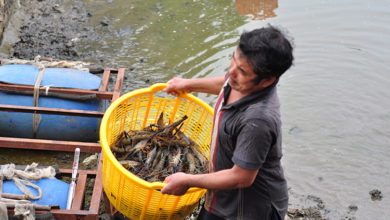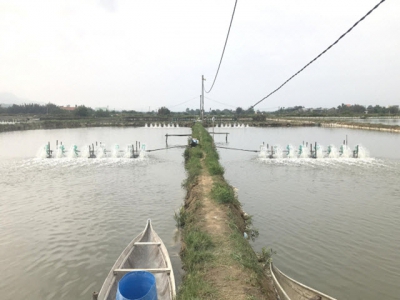Fishery export reaches US$ 16 billion by 2030
The orientation of the fishery industry by 2030 is that the total domestic production will reach 9.8 million tonnes, and the total export value will reach US$ 14-16 billion.
On June 10, the Ministry of Agriculture and Rural Development held an online conference on solutions to improve fishery exploitation, processing, and consumption for 2021 in Hanoi.
According to Deputy Minister Phung Duc Tien, in 2020, the Ministry of Agriculture and Rural Development and local leaders have drastically directed to create a positive change in the management and orientation of sustainable fisheries development by implementing the Law on Fisheries 2017.
Fuel prices in 2020 were relatively stable and decreased for many months, contributing to boosting domestic and export fishery production and consumption.
Total production of fishery exploitation in 2020 reached 3.85 million tonnes (up 2.06% compared to 2019), of which seafood exploitation reached 3.65 million tonnes (up 2.1% compared to 2019). The country’s seafood export turnover in 2020 reached US$ 3.435 billion, up 3.12% compared to 2019.
Deputy Minister Phung Duc Tien has assessed the fishery industry in general and the seafood exploitation, processing, and consumption.
The fishery industry has faced many difficulties and challenges such as the complicated development of the Covid-19 epidemic, security at sea with unpredictable risks, and extreme weather with many storms in the last few months in 2020;
Transport prices increased, selling prices of high-quality products fell. The shortage of fishing labor in both quantity and quality has led to many fishing vessels having to stay ashore;
Fishery infrastructure such as fishing ports and storm shelters have not met the actual requirements. The application of technological advances to the seafood industry, especially in preserving products to reduce post-harvest losses, is still slow.
The European Commission’s “yellow card” warning has not been removed, new technical barriers are being formed, which continue to adversely affect the fishery production and export of Vietnam, etc.
According to the target set by the Ministry of Agriculture and Rural Development, the total exploitation, processing, and consumption of fishery products in 2021 will reach about 8.5 million tonnes, equaling 101.1% compared to 2020, of which the fishery exploitation about 3.61 million tonnes, equaling 93.6% compared to 2020. The export turnover of Fishery products reached about US$ 8.6 billion, equaling 102.6% compared to 2020, in which the export value of seafood products accounts for 35-37%.
By 2030, the growth rate of fishery production value will reach 3-4% per year. The total domestic production of fishery products will reach 9.8 million tonnes, of which the fishery exploitation was 2.8 million tonnes; the export turnover of fishery products will reach US$ 14-16 billion; create jobs for more than 3.5 million workers, with an average income per fishery worker equivalent to the average income per the whole country’s worker.
“It is necessary to closely follow the contents and objectives of Resolution No. 36-NQ/TW on the Strategy for sustainable development of Vietnam’s marine economy to 2030, with a vision to 2045 and Decision No. 339/QD-TTg of The Prime Minister has approved the Strategy for the development of Vietnam’s fisheries to 2030, with a vision to 2045″, emphasized Deputy Minister Phung Duc Tien.
The leader of the Ministry of Agriculture and Rural Development also said that the Ministry and Directorate of fisheries and related units are implementing many important tasks such as:
Reviewing and re-planning the system of fishing ports and storm shelters; Planning to protect and exploit fishery products; reorganize the production and exploitation of fishery products in the sea areas and fishing professions;
Developing human resources, promoting the application of advanced science and technology in aquaculture, exploitation, preservation, and processing of seafood; creating key products with high quality and economic value, meeting the market’s needs, with prestigious brands, competitiveness, and international integration.






